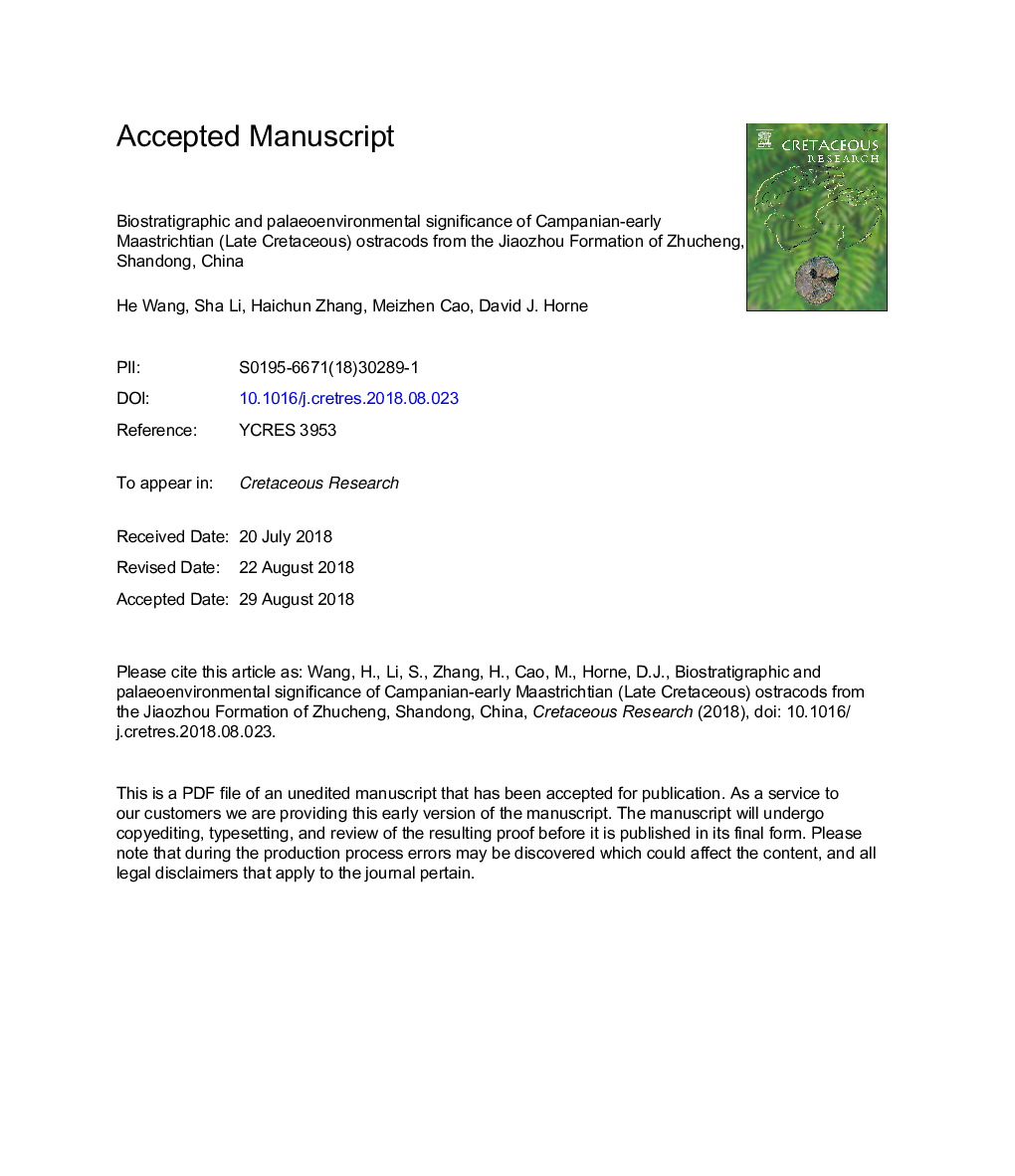| Article ID | Journal | Published Year | Pages | File Type |
|---|---|---|---|---|
| 10149884 | Cretaceous Research | 2019 | 62 Pages |
Abstract
Cretaceous strata are well developed in the Jiaolai Basin (Jiaodong Peninsula, East China) and contain abundant fossils including hadrosaurids, tyrannosauroids, various types of dinosaur eggs, bivalves, gastropods, ostracods, clam shrimps, insects and plants. During a geological investigation in Zhucheng City, eastern Shandong Province, East China, a new exposure of part of the Jiaozhou Formation was discovered near Jiankou Village. This formation constitutes uppermost Cretaceous to earliest Paleogene strata (encompassing the K/Pg boundary) in the Jiaolai Basin. Samples from a new Jiankou section yielded abundant ostracods assigned to twelve genera and twenty-seven species, reported for the first time from the Jiaozhou Formation in this area. The assemblage is composed entirely of non-marine taxa, including species of Cypridea, Talicypridea and Candoniella. Ostracod biostratigraphy indicates this section to be Campanian to early Maastrichtian in age, but not including the K/Pg boundary commonly present in the upper part of the Jiaozhou Formation. Palaeoenvironmental analysis of the species composition of the assemblages obtained, combined with a study of valve ornamentation, suggests that during the late Campanian, an ephemeral pond or small ephemeral lake alternated with a permanent lake in the studied area, and during the Campanian to Maastrichtian interval, there was a seasonally expanding and shrinking lake with both permanent and ephemeral basins in the studied area.
Related Topics
Physical Sciences and Engineering
Earth and Planetary Sciences
Palaeontology
Authors
He Wang, Sha Li, Haichun Zhang, Meizhen Cao, David J. Horne,
